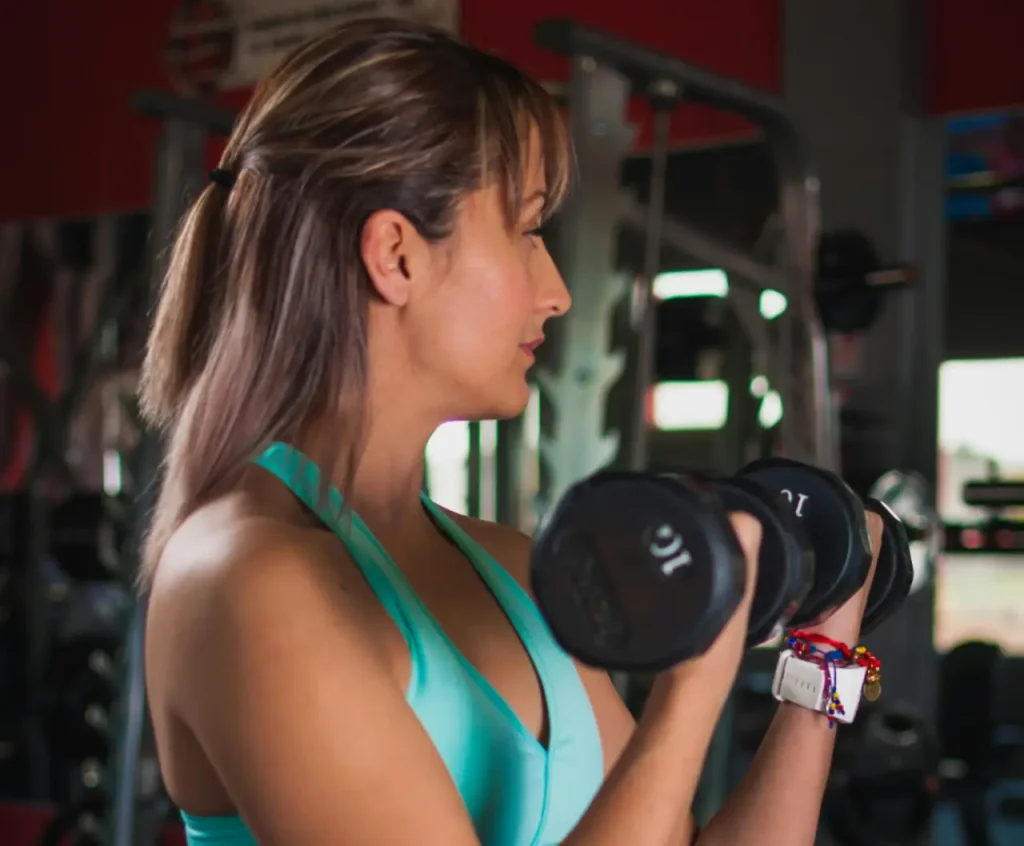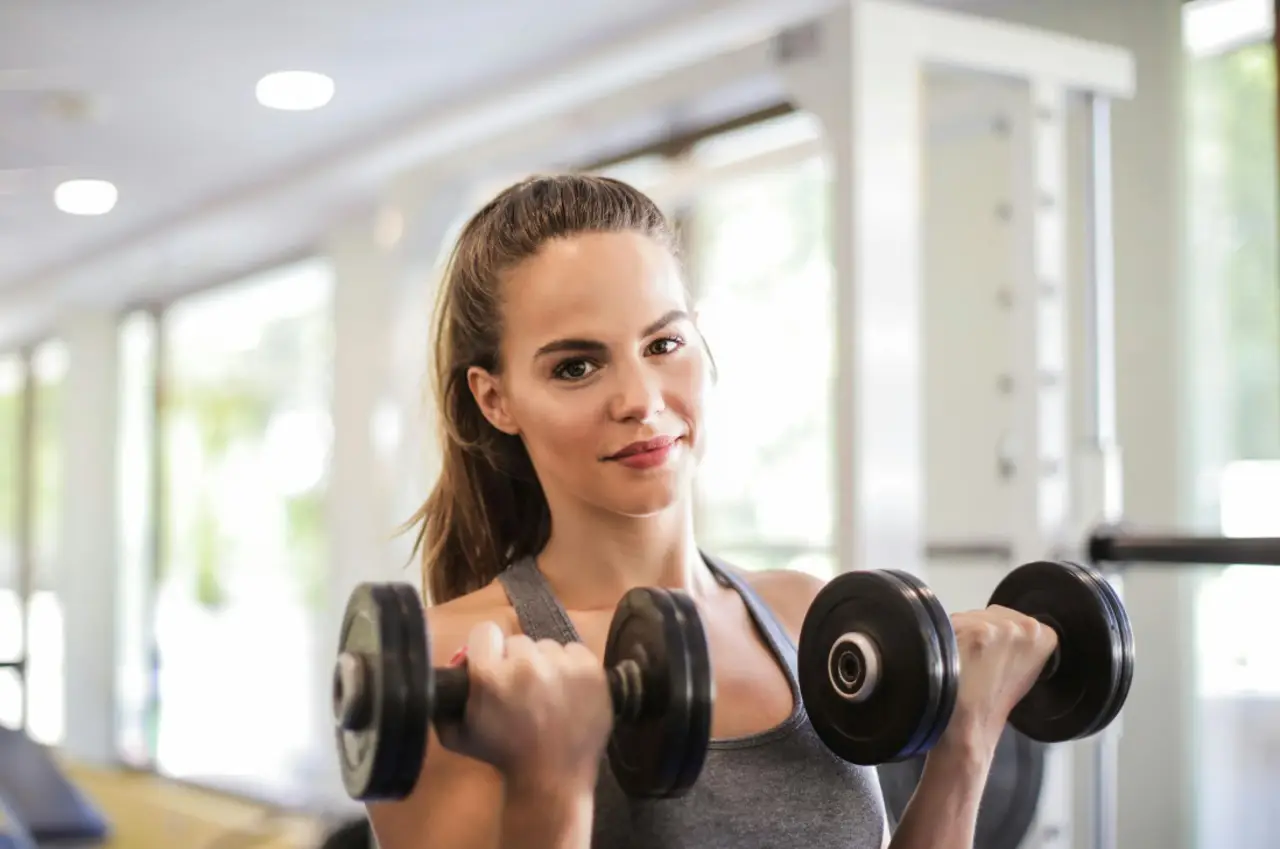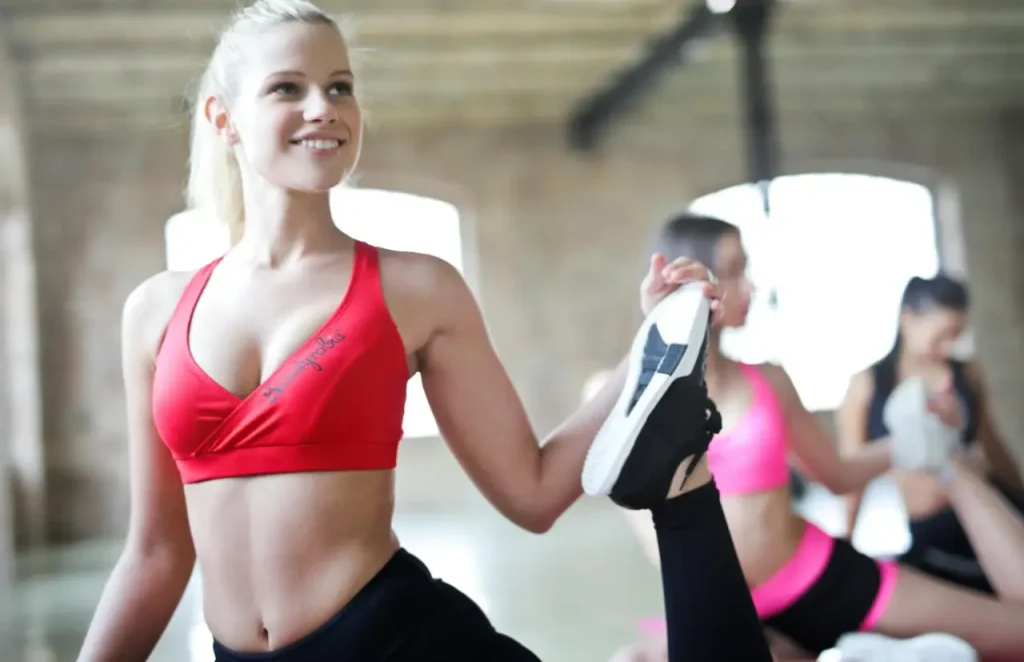There are countless dumbbell exercises that can help you build and define your upper body. One of my top recommendations for clients looking to tone their shoulders, chest, and arms is the chest fly.
Why is it so effective? This move excels at isolating these muscle groups due to the fact that you’re lying flat on your back. Being in a supine position provides more stability, allowing you to concentrate on the muscles you’re targeting, which is why the chest fly is such a popular choice.
Though your lower body gets to relax, you’ll need to keep your core engaged by pulling your belly button towards your spine and holding your abs in an isometric contraction. Engaging your core while working your arms not only helps you strengthen your midsection but also prevents unnecessary strain on your lower back during the exercise.

An added bonus is that this exercise requires minimal equipment. A pair of dumbbells will suffice, but in a pinch, you could substitute them with filled water bottles or canned goods if free weights aren’t available.
As an ACE certified trainer, I’ll walk you through how to perform a dumbbell chest fly with clear, step-by-step guidance. I’ll also cover its benefits, variations, and share a few tips to perfect your form. Let’s dive in.
How to perform a dumbbell chest fly
- Start by lying on your back with your feet flat on the floor. Hold the dumbbells with your palms facing each other.
- Press the dumbbells up above your chest with a slight bend in your elbows, keeping your wrists straight.
- As you inhale, slowly lower the dumbbells out to your sides at shoulder height, keeping your arms in a soft arc (imagine you’re hugging a tree). Lower them until the backs of your upper arms lightly touch the mat.
- Exhale and carefully bring the dumbbells back to the starting position, maintaining the same arc in your arms.
What are the benefits of a dumbbell chest fly?
Although the dumbbell chest fly mainly targets the chest and shoulders, it also aids in improving posture by opening up the chest and promoting scapular retraction (this is when your shoulder blades move towards your spine).
As someone who is seven months pregnant, I include this exercise in all my upper body strength sessions to help maintain good posture as my baby bump grows.
Runners also benefit from this exercise due to its positive impact on posture, which can lead to better running form and increased efficiency.
Variations of the dumbbell chest fly
- Standing chest fly: Hold a dumbbell in each hand, with palms facing in. Stand with your feet hip-width apart, hinge forward at the hips, keeping a neutral spine and a slight bend in the knees. Lift the dumbbells out to your sides, stopping at shoulder height, squeezing your shoulder blades together at the top. This variation enhances posture by focusing on strengthening the muscles along your back.
- Stability ball chest fly: Lie on a stability ball with your shoulder blades resting on the ball and the rest of your body in a tabletop position (knees bent at 90 degrees and feet flat). Perform the chest fly as usual, which will challenge your core and balance while ensuring proper form.
- Alternating chest fly: Perform a traditional lying chest fly, but alternate arms as you lower the dumbbells. This adds an extra core challenge as your torso will have to work harder to stay stable and resist rotation.

How to incorporate the dumbbell chest fly into your routine
To allow adequate recovery, performing chest flies two to three times a week is ideal. Here’s how to integrate them into your workout:
- Upper body strength day: On days where you focus on arms and shoulders, include chest flies. They’ll not only improve upper body stability but will also tone your chest muscles and improve your posture.
- Chest or shoulder workout: The chest fly fits perfectly into a chest or shoulder day routine. For example, after finishing a set of shoulder presses, follow up with a set of chest flies to challenge your upper body further.





